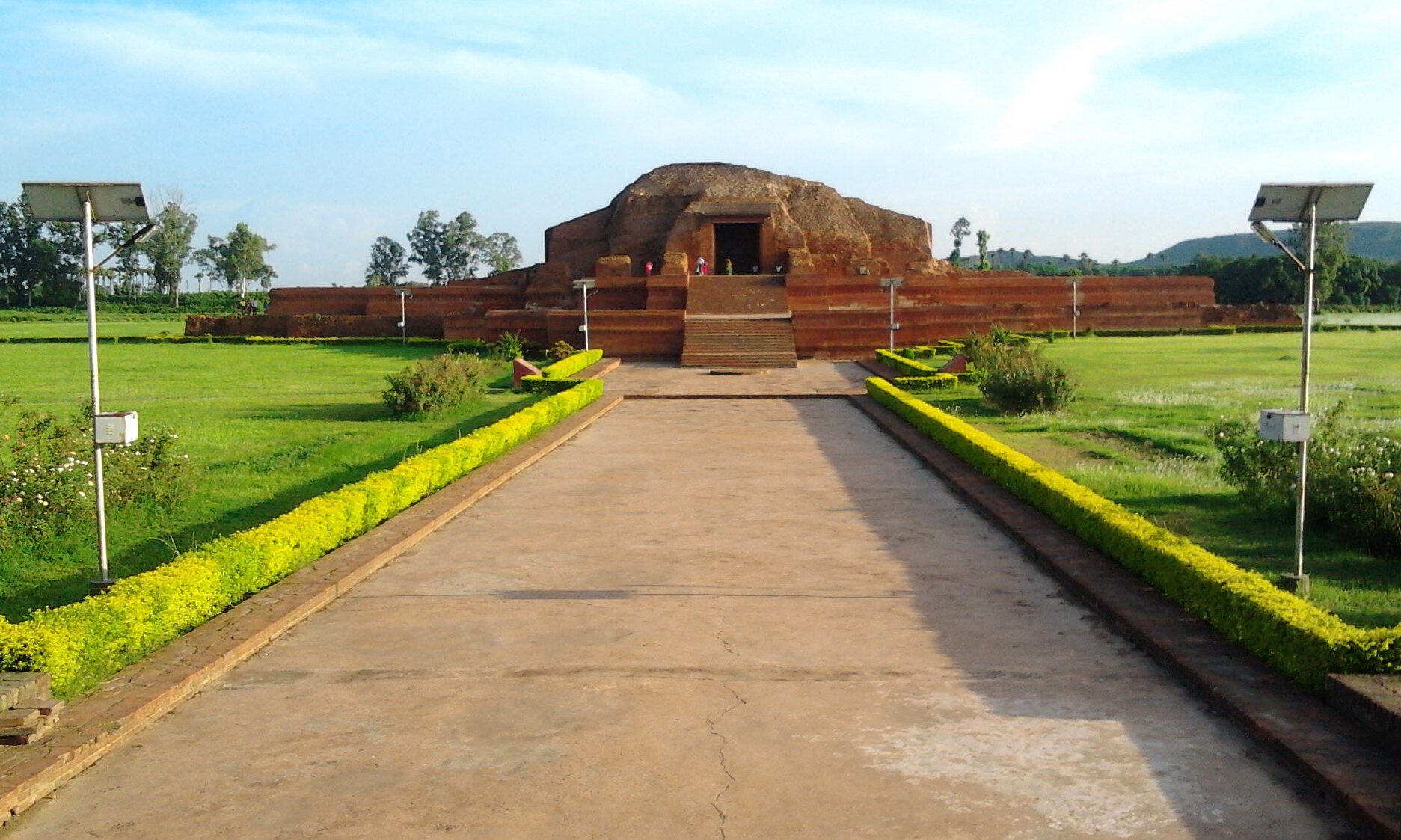This is supposed to be the capital of the last local king of Pala dynasty, Indradyumna of 12th century. It was earlier known as Indraprastha.Today only the low brick foundations of buildings survive above ground . About a dozen sculptures, mostly dating to about the seventh century have been found at this place such as Standing Buddha image (61 x 28 cm, ), Standing Buddha torso(66 X 28 cm ), Stone stupa with seated Buddha(H. 61cm, diameter 30.5 cm ), Seated Buddha image(45.5X26.5 cm), Seated Buddha image(50.5 x 30.5 cm ), Seated Buddha image(30.5×23 cm ), Torso of seated Buddha image(40.5 x 39.5 cm number), Four-sided relief with Buddha images(26.5X23 cm ), Terracotta head (H. 11.5 cm. unnumbered),Pedestal of standingfigure(30.5×57 cm), Bhairava image(56 x 28 cm ) all these are kept in the Jamui Museum.
Buchanan-Hamilton visited the site in 1811. He took it to be a fort, in keeping with local tradition. Although he referred to it only as Indappe, the suffix garh, meaning fort, is commonly used for the site today and preserves that local tradition. The structure is remains today, a large rectangular brick enclosure approximately 500 meters in perimeter. It was said to have been founded by a raja Indradyumna, traditionally said to have been the last Pala monarch, a tradition not supported by any evidence. Although Buchanan-Hamilton accepted the identification of ruins within the walls as being those of royal quarters and offices appropriate to a fort, he noted a mound that dominates the interior , said to be the place where the raja enjoyed the evening air. He doubted that identification, suggesting instead that it was ” a solid temple of a Buddha”.
Above photograph showing the brick-lined vent in the overgrown stupa at Indpai (Indapaigarh) was taken by Joseph David Beglar c.1872-73 and forms part of the Archaeological Survey of India Collections (Indian Museum Series).
The KP Jayaswal Research Institute, during in the course of its Archaeological Explorations brought to light the site period Early medieval.






















